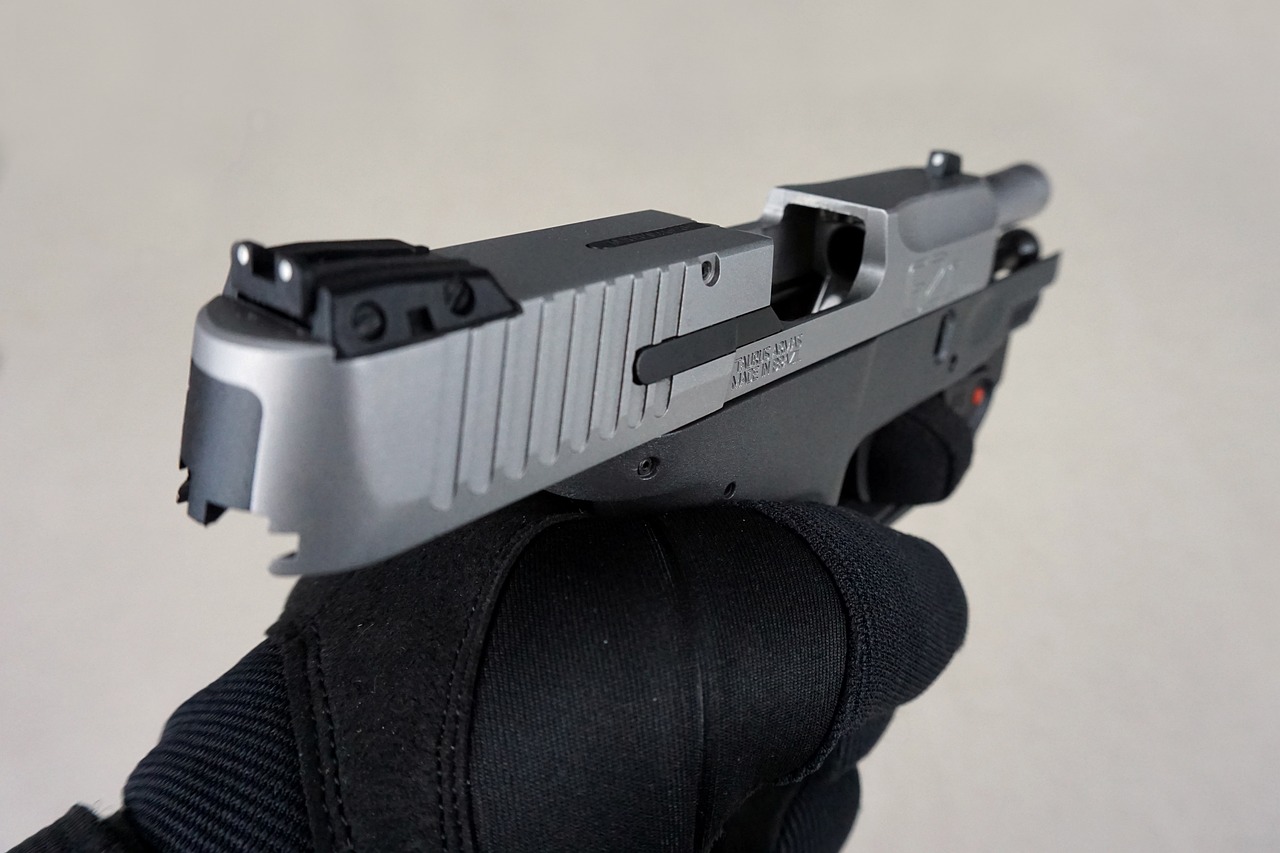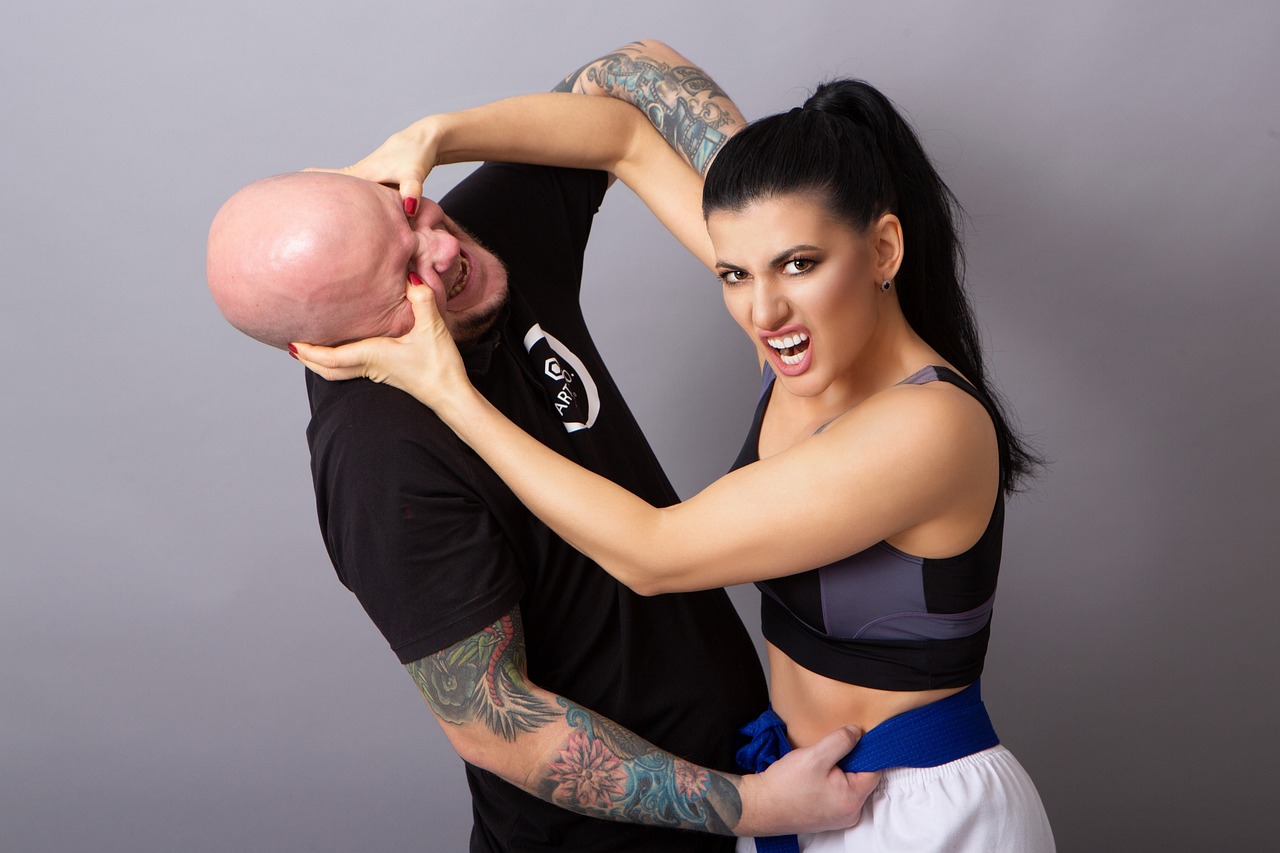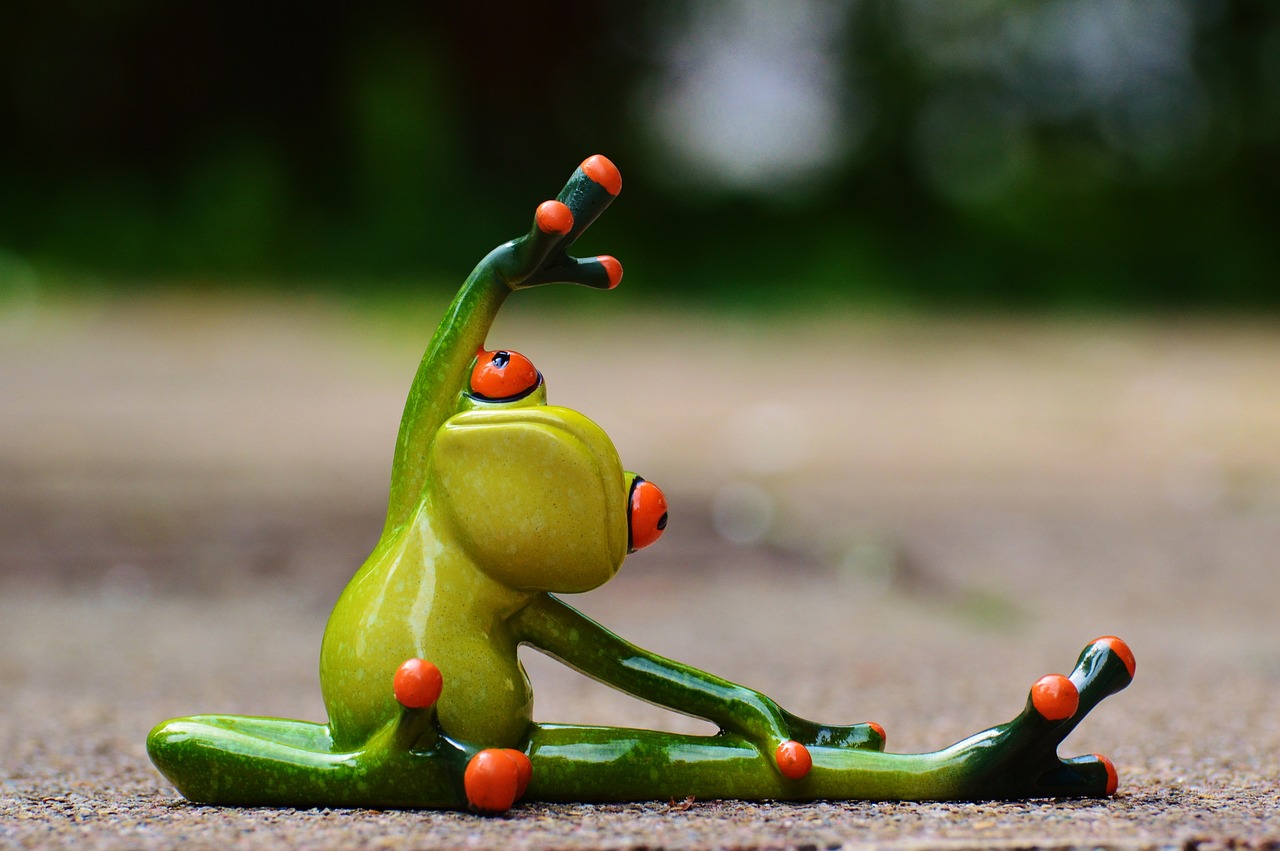Self-Defense Techniques - Reducing the Risk of Personal Injuries
In today’s unpredictable world, the ability to defend oneself is not just a skill; it’s a necessity. Self-defense techniques empower individuals to protect themselves and reduce the risk of personal injuries in threatening situations. Imagine walking down a quiet street when suddenly, you feel a presence behind you. Wouldn’t it be reassuring to know that you have the skills to handle such a situation? This article delves into various self-defense techniques, equipping you with knowledge that could potentially save your life or someone else's.
Self-defense is more than just physical techniques; it’s a legal right to protect oneself from harm. Understanding the principles and legalities surrounding self-defense is crucial. In many jurisdictions, the law allows individuals to use reasonable force to defend themselves against an imminent threat. However, what constitutes "reasonable" can vary widely. Knowing your rights and responsibilities in self-defense situations is vital. For instance, did you know that in some places, you have a duty to retreat before using force? Being informed can prevent legal troubles down the line.
Learning fundamental self-defense techniques can significantly enhance personal safety. These basic moves are not just for martial artists; they are accessible to everyone. Whether you’re a teenager, a busy professional, or a retiree, incorporating self-defense techniques into your routine can boost your confidence and preparedness. Imagine having the ability to stand your ground against an attacker or evade a dangerous situation altogether. Here are some essential techniques that anyone can practice:
Striking techniques are vital in self-defense. They can be the difference between escaping a dangerous situation or facing harm. Effective strikes like punches and kicks can incapacitate an attacker, providing you the necessary seconds to escape. To execute these moves safely and effectively, focus on:
- Punches: Aim for the attacker's face or body, using your fist to deliver a quick, powerful blow.
- Kicks: Target the knees or groin area, using your legs to create distance between you and the attacker.
Remember, the goal is not to engage in a fight but to create an opportunity to escape.
Identifying target areas on an attacker can significantly increase the effectiveness of your strikes. Vulnerable areas such as the eyes, throat, and groin are prime targets during an altercation. A well-placed strike to these areas can cause temporary incapacitation, giving you the chance to flee. Think of these target areas as pressure points; hitting them can disrupt the attacker’s balance and focus.
Good footwork is crucial in self-defense. It’s not just about the moves you make, but how you position yourself in relation to an attacker. Maintaining balance and evading attacks effectively can often be more important than delivering a powerful strike. Practice moving in a way that keeps you light on your feet. Imagine a dancer gracefully moving across the stage; that’s the kind of fluidity you want in a self-defense situation. Here are some tips:
- Keep your knees slightly bent for better balance.
- Shift your weight from one foot to another to remain agile.
Defensive techniques help you protect yourself from incoming attacks. Techniques like blocking and parrying can minimize damage while creating opportunities for escape. Think of your body as a shield; the more effectively you can block or redirect an attack, the safer you will be. Learning to read an attacker’s movements can give you a split-second advantage, allowing you to react before they strike.
Situational awareness is key to preventing dangerous encounters. It’s about being aware of your surroundings and recognizing potential threats before they escalate. This means not only paying attention to people around you but also being mindful of your environment. Are you in a well-lit area? Are there exits nearby? By staying alert and aware, you can often avoid situations that may require self-defense altogether. It’s like being a detective in your own life; observing clues that could indicate danger.
Various tools can aid in self-defense, enhancing your ability to protect yourself. Common self-defense items include pepper spray and personal alarms. These tools can provide an extra layer of security, particularly for those who may feel uncomfortable with physical confrontation. However, it’s essential to know how to use these tools effectively and responsibly. For instance, pepper spray can be a powerful deterrent, but improper use may lead to unintended consequences.
Understanding the legal implications of using self-defense tools is essential. Laws surrounding self-defense weapons can vary greatly depending on your location. Some areas may have restrictions on what self-defense tools you can carry. Familiarize yourself with local regulations to avoid legal issues. It’s like knowing the rules of a game; understanding them can help you play without getting penalized.
Regular training and practice are vital for effective self-defense. Enrolling in self-defense classes can provide you with the skills and confidence needed to protect yourself. These classes often simulate real-life scenarios, allowing you to practice techniques in a safe environment. Consistently practicing these techniques is crucial; just like any skill, the more you practice, the more instinctive your responses will become. Think of it as honing a craft; it takes time, but the rewards are invaluable.
Q: Do I need to be physically strong to learn self-defense?
A: No, self-defense techniques can be learned by anyone, regardless of physical strength. It's more about technique and strategy than brute force.
Q: Is it legal to use self-defense techniques?
A: Yes, self-defense is a legal right, but the laws vary by location. It's important to know your local laws regarding self-defense.
Q: How often should I practice self-defense techniques?
A: Regular practice is key! Aim to practice at least once a week to maintain your skills and confidence.

Understanding Self-Defense
Self-defense is not just a physical response; it’s a fundamental legal right that empowers individuals to protect themselves from harm. Imagine walking down a dimly lit street and suddenly feeling threatened. What do you do? Understanding the principles of self-defense can be your guiding light in such situations. It’s crucial to know that self-defense laws vary by location, but the core idea remains the same: you have the right to defend yourself against an imminent threat.
At its core, self-defense is about proportionality and reasonableness. This means that your response to a threat should be appropriate to the level of danger you face. For example, if someone shoves you, responding with excessive force could land you in legal trouble. Knowing your rights is just as important as knowing how to physically defend yourself. It’s a delicate balance between protecting yourself and not crossing the line into aggression.
Consider this: self-defense is not only about physical techniques but also about being aware of your surroundings. You might not need to engage in a physical altercation if you can recognize potential threats early on. This is where the concept of situational awareness comes into play. Staying alert and recognizing suspicious behavior can often prevent dangerous situations from escalating.
Furthermore, understanding the legal implications of self-defense can help you navigate the aftermath of an incident. If you ever find yourself in a situation where you must defend yourself, it’s essential to know what constitutes reasonable force in your jurisdiction. For instance, some areas allow for the use of non-lethal self-defense tools, while others have stricter regulations. Being informed can save you from unnecessary legal complications.
In summary, self-defense is a multifaceted concept that combines legal knowledge, physical techniques, and situational awareness. By understanding these elements, you empower yourself to react appropriately in threatening situations while staying within the bounds of the law. Remember, the goal of self-defense is not just to fight back but to protect yourself and escape safely.

Basic Self-Defense Techniques
Learning fundamental self-defense techniques can significantly enhance personal safety and provide you with the confidence to handle threatening situations. Imagine walking down the street, and suddenly, you feel a sense of unease. The ability to protect yourself can turn that anxiety into empowerment. Self-defense isn't just about physical strength; it's about using your body wisely and knowing how to react in a crisis. The good news is that anyone can learn these essential moves and strategies, regardless of age or fitness level.
One of the first things to understand is that self-defense is not about seeking confrontation; rather, it's about being prepared to defend yourself if necessary. This mindset is crucial. You want to be like a well-prepared chess player, always thinking two steps ahead. The techniques you learn can be categorized into different types, including striking techniques, defensive maneuvers, and awareness practices. Let’s dive deeper into some of these basic self-defense techniques.
Striking techniques are vital in self-defense, serving as your first line of defense against an attacker. Think of them as your verbal warning—if someone gets too close for comfort, a well-placed strike can send a clear message. Effective strikes include punches and kicks, but the key is knowing how to execute them safely and effectively. For instance, a simple jab can create enough distance between you and an aggressor, giving you the chance to escape.
To perform a punch correctly, keep your wrist straight and aim for vulnerable areas on the attacker's body. Kicks can be particularly powerful; a swift kick to the knee or shin can incapacitate an attacker momentarily. Remember, it's not about brute force; it's about precision and timing. Always practice these techniques in a safe environment, like a self-defense class, to ensure you can execute them under pressure.
Identifying target areas on an attacker can significantly increase the effectiveness of your strikes. Vulnerable areas such as the eyes, throat, and groin are prime targets that can help you gain the upper hand in a dangerous situation. For example:
| Target Area | Effectiveness | Technique |
|---|---|---|
| Eyes | Immediate distraction | Poke or strike |
| Throat | Breathing difficulty | Choke or strike |
| Groin | Intense pain | Knee strike or kick |
Targeting these areas can incapacitate an attacker long enough for you to escape. Just remember, the goal is to create an opportunity to get away safely, not to engage in a prolonged fight.
Good footwork is crucial in self-defense. It’s like being a dancer in a way—fluid, balanced, and ready to move at a moment's notice. Maintaining mobility and positioning can make all the difference in a confrontation. When you’re aware of your surroundings and can move effectively, you can evade attacks and create space between you and a potential threat. Here are a few tips:
- Stay light on your feet, ready to pivot or sidestep.
- Keep your knees slightly bent for better balance.
- Practice moving in different directions to enhance your agility.
By focusing on your footwork, you can improve your chances of avoiding an attack altogether. Remember, the best self-defense is often avoiding a confrontation in the first place!
Defensive techniques are equally important, as they help you protect yourself from incoming attacks. Techniques like blocking and parrying can minimize damage while creating opportunities for escape. Think of these moves as your shield; they allow you to deflect an attack and regain your composure. Practicing these techniques will give you the confidence to react when it matters most.
Ultimately, the combination of striking and defensive techniques, along with good footwork, creates a solid foundation for personal safety. The more you practice, the more instinctive these moves will become, and you'll find yourself feeling more secure in your ability to defend yourself.
Q: Do I need to be strong to defend myself?
A: Not at all! Self-defense relies more on technique and strategy than on physical strength. Anyone can learn effective self-defense techniques.
Q: How often should I practice self-defense techniques?
A: Regular practice is key. Aim for at least once a week to keep your skills sharp and your confidence high.
Q: Are self-defense classes worth it?
A: Absolutely! Self-defense classes provide structured training, expert guidance, and a supportive environment to learn and practice techniques safely.

Striking Techniques
When it comes to self-defense, are your first line of defense. Imagine being in a situation where your safety is at risk; knowing how to strike effectively can make all the difference between escaping unharmed and facing serious injury. Striking techniques encompass a variety of moves, including punches, kicks, and elbow strikes, which can be used to fend off an attacker. The beauty of these techniques lies in their simplicity and effectiveness, making them accessible even to those without a martial arts background.
One of the most fundamental striking techniques is the straight punch. This move is not just about throwing your fist; it’s about precision and power. To execute a straight punch, you should start in a balanced stance, with your feet shoulder-width apart. As you throw the punch, rotate your hips and shoulders to generate momentum, ensuring that your fist connects with the target in a straight line. This technique can be surprisingly effective, especially when aimed at vulnerable areas of an attacker’s body.
Another essential technique is the front kick. This kick can create distance between you and an assailant, buying you precious seconds to escape. To perform a front kick, lift your knee towards your chest and extend your foot forward, striking with the ball of your foot. It’s crucial to maintain your balance during this move, as a solid foundation will enhance your striking power and stability.
In addition to these basic techniques, you should also be aware of the importance of targeting. Striking is not just about hitting; it’s about hitting effectively. Knowing where to strike can greatly increase your chances of successfully defending yourself. Here are some key target areas:
- Eyes: Aiming for the eyes can temporarily blind an attacker, giving you a chance to escape.
- Throat: A well-placed strike to the throat can incapacitate an assailant.
- Groin: A kick to the groin is often effective due to the sensitivity of the area.
As you practice these techniques, remember that footwork plays a crucial role in striking. Good footwork allows you to maintain balance and position yourself effectively. Always keep your feet moving; this not only helps you evade attacks but also positions you better for your own strikes. Think of your footwork as the foundation of a house; without a solid base, everything else can crumble.
Finally, it’s essential to practice these techniques regularly. Just like any skill, the more you practice striking techniques, the more instinctive they become. Consider enrolling in a self-defense class or practicing with a partner to refine your skills. Remember, the goal is not just to learn how to strike but to do so with confidence and control.
Q: Do I need to be physically fit to learn striking techniques?
A: While being physically fit can help, striking techniques can be learned by anyone, regardless of fitness level. The key is practice and technique.
Q: Can I use striking techniques in any situation?
A: Striking techniques should only be used when necessary to protect yourself from harm. Always assess the situation and prioritize de-escalation when possible.
Q: How can I practice striking techniques safely?
A: Consider using a punching bag or practicing with a partner in a controlled environment. Always wear appropriate protective gear to minimize the risk of injury.

Target Areas
When it comes to self-defense, knowing where to strike can make all the difference in a tense situation. Targeting vulnerable areas on an attacker not only increases the effectiveness of your strikes but can also provide you with a crucial advantage to escape. Think of these target areas as the weak points in an opponent's armor; if you can hit them right, you can create an opening to get away safely.
Here are some of the most effective target areas you should focus on during an altercation:
- Eyes: A quick jab to the eyes can temporarily blind an attacker, giving you precious seconds to escape.
- Throat: Striking the throat can disrupt breathing and cause significant pain, which can incapacitate your assailant.
- Groin: A kick to the groin is a classic move in self-defense. It's not only painful but can also double the attacker over, allowing you to flee.
- Solar Plexus: A strike to the solar plexus can knock the wind out of someone, leaving them gasping for air.
- Knees: A well-placed kick to the knees can destabilize an attacker, making it hard for them to pursue you.
While these target areas are effective, it’s also important to remember that every situation is unique. The goal is to create an opportunity for escape, not to engage in a prolonged confrontation. When practicing self-defense techniques, always visualize these target areas and think about how you would apply them in real life. The more you familiarize yourself with these concepts, the more instinctive your reactions will become in critical moments.
In addition to knowing where to strike, maintaining a strong mental state is essential. Confidence plays a huge role in self-defense. If you believe in your ability to defend yourself, you are more likely to react appropriately when faced with danger. So, practice these techniques regularly and keep these target areas in mind to enhance your self-defense skills.

Footwork and Movement
When it comes to self-defense, footwork and movement are often underestimated yet incredibly vital components. Imagine a dancer on stage, gracefully moving to the rhythm of the music; that’s how important your footwork is in a self-defense scenario. It’s not just about throwing punches or kicks; it’s about positioning yourself in a way that maximizes your ability to defend and escape. Good footwork allows you to maintain balance, create distance from an attacker, and find openings to counterattack. Think of it as the foundation of a house; without a solid base, everything else is at risk of collapsing.
To enhance your footwork, consider the following key principles:
- Stay Light on Your Feet: Always keep your weight balanced and be ready to move. This agility allows you to quickly respond to changing situations.
- Practice Lateral Movement: Don’t just move back and forth. Practice moving side to side as well; this can help you evade attacks more effectively.
- Maintain a Low Center of Gravity: Bending your knees slightly can help you stay stable and ready to react, much like a sprinter poised at the starting line.
Additionally, it's crucial to understand the concept of distance management. This refers to the space between you and your attacker. By controlling this distance, you can avoid being hit while setting yourself up for a counter. For instance, if an attacker lunges at you, stepping back while maintaining your balance allows you to evade the blow. Alternatively, if you notice an opening, you can quickly close the gap to strike effectively.
Another essential aspect of footwork is pivoting. This technique involves rotating your body on your feet to change direction quickly. Imagine you’re a cat, agile and ready to pounce; that’s the kind of quickness you want to embody. Pivoting not only helps you evade attacks but also positions you better to counterattack. Practicing this movement can significantly enhance your overall effectiveness in self-defense.
Incorporating drills into your routine can help improve your footwork. Here’s a simple drill to get you started:
| Drill | Description | Duration |
|---|---|---|
| Shadow Boxing | Practice moving in different directions while throwing punches and kicks, focusing on your footwork. | 10 minutes |
| Lateral Movement Drill | Set up two markers and practice moving laterally between them while maintaining balance. | 5 minutes |
| Pivoting Drill | Practice pivoting on your feet while throwing strikes to develop fluidity and control. | 5 minutes |
Ultimately, mastering footwork and movement can be the difference between successfully defending yourself and being caught off guard. It’s about being proactive rather than reactive, and with practice, you can develop the agility and awareness needed to navigate any threatening situation. So, lace up those shoes, hit the training floor, and start moving!
1. Why is footwork important in self-defense?
Footwork is crucial because it allows you to maintain balance, control distance, and evade attacks, making it easier to defend yourself effectively.
2. How can I improve my footwork?
You can improve your footwork through drills like shadow boxing, lateral movement exercises, and pivoting practices. Consistency is key!
3. Is it necessary to take self-defense classes to learn footwork?
While self-defense classes provide structured training, you can also practice footwork on your own. However, professional guidance can help you learn proper techniques faster.
4. Can footwork help in other sports or activities?
Absolutely! Good footwork is beneficial in various sports like basketball, soccer, and martial arts, enhancing your overall agility and coordination.

Defensive Techniques
When it comes to self-defense, knowing how to protect yourself from incoming attacks is just as crucial as knowing how to strike back. Defensive techniques are your first line of defense, allowing you to minimize damage while creating opportunities to escape or counterattack. Imagine being in a situation where an attacker lunges at you; your instinct might be to panic. However, with the right defensive techniques, you can turn that panic into effective action.
One of the most fundamental defensive techniques is blocking. This involves using your arms or hands to intercept an attack. Think of your arms as a shield; they can absorb the impact of punches or strikes, allowing you to maintain your balance and composure. For instance, if someone throws a punch at your face, a well-timed block can deflect the blow, keeping you safe. It's essential to practice the right angles and positions to ensure your blocks are effective. You don’t want to just throw your arms up; you need to create a solid barrier.
Another vital technique is parrying. Unlike blocking, which is more about absorbing force, parrying involves redirecting the attacker's momentum. Picture a skilled matador gracefully sidestepping a bull; that's the essence of parrying. By using a quick, fluid motion, you can deflect an incoming strike away from your body, creating space to either escape or counterattack. This technique requires timing and precision, so practicing with a partner can greatly enhance your skills.
In addition to blocking and parrying, it's important to incorporate movement into your defensive strategy. Staying mobile can help you evade attacks and reposition yourself advantageously. For example, if an attacker approaches, rather than standing still, you can sidestep or pivot away from the attack. This movement not only helps you avoid getting hit but also allows you to assess the situation better and find an escape route. Remember, the goal is not to engage but to survive and get away safely.
To further illustrate the importance of these techniques, let’s look at a simple table that summarizes the key defensive techniques and their purposes:
| Technique | Description | Purpose |
|---|---|---|
| Blocking | Intercepting an attack with your arms or hands. | Minimize damage and maintain balance. |
| Parrying | Redirecting an attack away from your body. | Create space for escape or counterattack. |
| Movement | Using footwork to evade attacks. | Avoid getting hit and reposition yourself. |
Ultimately, mastering these defensive techniques will give you the confidence to face potential threats. But remember, practice makes perfect! Regularly training these moves will not only improve your skills but also help you react instinctively in high-pressure situations. So, gather a friend, head to a self-defense class, or even practice in front of a mirror. The more you familiarize yourself with these techniques, the more prepared you’ll be when it matters most.
- What is the best way to learn self-defense techniques? Enrolling in self-defense classes taught by professionals is the most effective way to learn. Regular practice will help reinforce your skills.
- Can I effectively defend myself without formal training? While some basic techniques can be learned through online resources or videos, formal training provides crucial context and safety measures.
- Are there legal implications to using defensive techniques? Yes, understanding local laws regarding self-defense is essential. Always ensure that your actions are justified under the law.

Situational Awareness
is your first line of defense against potential threats. It's about being conscious of your surroundings and understanding the dynamics of your environment. Imagine walking through a park; instead of just admiring the scenery, you should also be scanning for anything unusual. Are there people loitering? Is someone acting suspiciously? By cultivating this awareness, you can often avoid dangerous situations before they escalate.
One way to enhance your situational awareness is through the practice of mindfulness. This means being present in the moment and tuning into your senses. What do you hear? What do you see? What do you feel? By honing in on these details, you can better assess your environment. For instance, if you hear shouting or notice a group of people gathering, it might be a signal to steer clear.
In addition, consider the three-step process to improve your situational awareness:
- Observe: Regularly scan your environment. Look for exits, potential hazards, and people around you.
- Assess: Analyze the information you've gathered. Are there any threats? Is the situation escalating?
- React: Make decisions based on your observations. If something feels off, trust your instincts and take action.
Another crucial aspect of situational awareness is understanding the concept of 'baseline behavior'. This means recognizing what is normal for a given environment. For example, in a busy café, the baseline might include people chatting and baristas making drinks. If someone suddenly starts behaving erratically, that deviation from the norm could be a sign of trouble. By training yourself to notice these shifts, you can react more swiftly and appropriately.
Remember, situational awareness is not about living in fear; it's about empowering yourself. By staying alert and informed, you can navigate through life with confidence. Just like a skilled chess player anticipates moves ahead, you too can foresee potential threats and avoid them. Ultimately, being aware of your surroundings can significantly reduce your risk of encountering dangerous situations.
Q: What is situational awareness?
A: Situational awareness is the ability to perceive, comprehend, and predict potential threats in your environment, allowing you to make informed decisions about your safety.
Q: How can I improve my situational awareness?
A: You can enhance your situational awareness by practicing mindfulness, regularly observing your surroundings, and understanding baseline behaviors in different environments.
Q: Is situational awareness only important in dangerous situations?
A: No, situational awareness is beneficial in everyday life. It helps you make better decisions, stay safe, and avoid accidents.

Self-Defense Tools
When it comes to self-defense, having the right tools can be a game changer. Just like a carpenter wouldn't show up to a job without their trusty hammer and nails, you shouldn't walk around unprepared for potential threats. Self-defense tools are not just accessories; they are essential items that can help you protect yourself in dangerous situations. From personal alarms to pepper spray, each tool serves a unique purpose and can provide an added layer of security.
One of the most popular self-defense tools is pepper spray. This small canister is packed with a powerful formula designed to incapacitate an attacker temporarily. When sprayed in the face, it can cause intense burning sensations, allowing you precious seconds to escape. It's compact, easy to carry, and can be a lifesaver in a tight spot. However, it’s crucial to remember that using pepper spray comes with responsibilities. You must be aware of your local laws regarding its use, as some places have restrictions on carrying or using such tools.
Another effective self-defense tool is the personal alarm. This device emits a loud sound, typically around 120 decibels, which can attract attention and scare off a potential assailant. Think of it as your personal siren, designed to alert those around you that something is wrong. The best part? They are incredibly easy to use—just pull a pin or press a button, and you’re good to go! Plus, they can be easily attached to your keychain, making them convenient to carry.
For those who prefer a more hands-on approach, self-defense keychains are gaining popularity. These tools are designed to look like ordinary keychains but are crafted to be used as a striking weapon. They can be effective in delivering a quick jab to an attacker, giving you the chance to escape. However, it’s important to practice how to use these tools effectively, as relying solely on them without proper technique may not yield the best results.
In addition to these tools, it’s also wise to consider self-defense classes that teach you how to use these items effectively. Learning how to wield pepper spray or activate a personal alarm under stress can make all the difference. Classes not only provide practical skills but also boost your confidence, making you feel more secure in your ability to defend yourself.
As you explore the various self-defense tools available, remember that the most effective tool is often your own awareness and preparedness. Having tools is great, but knowing when and how to use them is essential. Always stay alert to your surroundings and trust your instincts. If something feels off, it probably is!
- What should I consider when choosing a self-defense tool?
Consider factors such as ease of use, legality in your area, and your comfort level with the tool. It’s also important to think about how easily you can access it in an emergency. - Are self-defense tools legal everywhere?
No, laws vary significantly by location. Always check local regulations regarding carrying and using self-defense tools to avoid legal complications. - How can I practice using self-defense tools?
Many self-defense classes offer practical training with tools. Additionally, you can practice in a safe environment with friends or family to build confidence and muscle memory.

Legal Considerations
When it comes to self-defense, understanding the legal implications is not just important—it's essential. The laws governing self-defense can vary significantly from one jurisdiction to another, and being unaware of your rights can lead to serious consequences. In many places, the law recognizes your right to defend yourself, but it also imposes strict guidelines on how and when you can use force. For instance, the principle of proportionality plays a crucial role; you are generally only allowed to use as much force as is necessary to prevent harm. If you exceed that amount, you might find yourself facing legal repercussions instead of being seen as a victim.
It’s also vital to understand the concept of imminent threat. Self-defense is typically justified only when there is an immediate threat to your safety. If you strike someone in retaliation for a past offense, you may not have a legal defense. Thus, timing and context are everything. In addition, some states have "stand your ground" laws, which allow you to use force without retreating when faced with a threat, while others have a "duty to retreat" requirement, meaning you must attempt to escape before using force. This can add layers of complexity to any situation where self-defense might be invoked.
Another aspect to consider is the use of self-defense tools. Items like pepper spray, stun guns, or personal alarms may be legal in some areas but prohibited in others. Always check your local laws regarding these tools, as carrying an illegal weapon can lead to criminal charges, regardless of your intentions. For example, if you use pepper spray in a situation deemed non-threatening, you could face legal consequences that outweigh the benefits of carrying it.
To further clarify the legal landscape, here’s a simple table summarizing key points to remember:
| Aspect | Details |
|---|---|
| Proportionality | Use only necessary force to prevent harm. |
| Imminent Threat | Self-defense is justified only against immediate threats. |
| Stand Your Ground | Some states allow force without retreating. |
| Duty to Retreat | Some states require you to escape if possible. |
| Self-Defense Tools | Check local laws on legality and usage. |
In summary, while self-defense is your right, it comes with responsibilities. It’s crucial to educate yourself about the laws in your area, as ignorance can lead to legal troubles that could have been easily avoided. Consider consulting a legal professional if you have questions about self-defense laws or if you plan to carry self-defense tools. Knowledge is power, and in the realm of self-defense, it can also be the difference between safety and legal jeopardy.
- What constitutes self-defense? Self-defense is the legal right to protect oneself from harm using reasonable force.
- Is it legal to carry self-defense tools? This varies by location; always check local laws regarding specific tools.
- Can I use self-defense if I provoked the attack? Generally, if you instigate a confrontation, your right to self-defense may be compromised.
- What should I do after a self-defense incident? It’s important to contact law enforcement and seek legal advice immediately.

Training and Practice
When it comes to self-defense, the saying "practice makes perfect" couldn't be more accurate. Regular training and practice are not just beneficial; they are essential for effective self-defense. Imagine trying to ride a bike without ever practicing. You might get on, but the chances of falling off are high. Similarly, self-defense techniques require repetition and muscle memory to be executed effectively when it matters most.
Enrolling in self-defense classes can be a game-changer. These classes not only teach you the fundamental techniques but also provide a safe environment to practice them. Think of it as a gym for your self-defense skills—where you can build strength, agility, and confidence. Many classes incorporate real-life scenarios, allowing you to apply what you've learned in a controlled setting, which is crucial for understanding how to react in actual situations.
Additionally, practicing with a partner can enhance your skills significantly. It allows you to learn how to gauge distance, timing, and the force required to execute various techniques. Regular sparring can also help you become accustomed to the adrenaline rush that comes with a confrontation, helping you to remain calm and collected when faced with a real threat. The more you practice, the more instinctual your reactions will become.
Here are some key components to consider when training:
- Consistency: Make it a point to train regularly. Just like any skill, self-defense requires ongoing practice to maintain proficiency.
- Variety: Incorporate different techniques and styles into your training. This not only keeps things interesting but also equips you with a broader range of skills to draw upon.
- Feedback: Seek feedback from instructors or experienced practitioners. Constructive criticism can help you refine your techniques and correct any bad habits.
Moreover, consider integrating physical fitness into your routine. Strength, flexibility, and endurance play a vital role in your ability to defend yourself. Engage in activities like running, weight training, or yoga to enhance your physical capabilities. After all, a strong body can often be your best defense.
Lastly, don't underestimate the value of mental preparation. Self-defense is as much about mindset as it is about physical techniques. Visualization techniques can be incredibly effective; imagine yourself successfully defending against an attacker. This mental rehearsal can boost your confidence and readiness, making you more likely to react effectively in a real situation.
- How often should I practice self-defense techniques? Regular practice is key. Aim for at least once a week, but more frequent sessions will yield better results.
- Can I learn self-defense online? Yes, many resources are available online, but practical, hands-on training is crucial for developing your skills effectively.
- What should I look for in a self-defense class? Look for qualified instructors, a focus on practical techniques, and a supportive environment that encourages learning.
Frequently Asked Questions
- What is self-defense?
Self-defense is the legal right to protect oneself from harm. It encompasses various techniques and strategies that individuals can use to fend off an attacker and ensure their safety.
- What are some basic self-defense techniques I can learn?
Basic self-defense techniques include striking moves like punches and kicks, as well as defensive maneuvers such as blocking and parrying. Practicing these techniques can significantly enhance your ability to protect yourself.
- How important is situational awareness in self-defense?
Situational awareness is crucial in self-defense. By staying alert and recognizing potential threats in your environment, you can often avoid dangerous situations before they escalate.
- What self-defense tools should I consider?
Common self-defense tools include pepper spray, personal alarms, and self-defense keychains. It's essential to learn how to use these tools effectively and responsibly for maximum safety.
- Are there legal considerations when using self-defense tools?
Yes, understanding the legal implications of using self-defense tools is vital. Laws vary by location, so it's important to familiarize yourself with local regulations to avoid potential legal issues.
- How often should I practice self-defense techniques?
Regular practice is key to effective self-defense. Enrolling in self-defense classes and practicing techniques consistently can help build your confidence and competence in real-life situations.
- Can self-defense techniques be learned by anyone?
Absolutely! Self-defense techniques can be learned by individuals of all ages and fitness levels. The important thing is to find a training program that suits your needs and abilities.
- What are vulnerable target areas on an attacker?
Identifying vulnerable target areas such as the eyes, throat, and groin can increase the effectiveness of your strikes during an altercation, giving you a better chance to escape.
- Is footwork important in self-defense?
Yes, good footwork is crucial! It helps you maintain balance, evade attacks, and position yourself effectively during a confrontation, making it a fundamental aspect of self-defense.



















